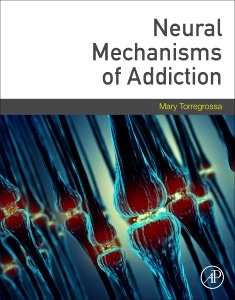Description
Neural Mechanisms of Addiction
Coordinator: Torregrossa Mary
Language: English
Subjects for Neural Mechanisms of Addiction:
Keywords
Abuse; Acetylation; Addiction; Adrenaline; Adrenergic receptor; Alcohol; Alcohol use disorder; AMPA; AMPA receptors; Animal model; Animal models; Associative learning; Astrocytes; Basal ganglia; Binge drinking; Cell adhesion molecules; Cell-adhesion molecules; Chronotype; Circadian genes; Circadian rhythms; Circuits; Clock controlled genes; Cocaine; Compulsive drug use; Compulsivity; Conclusions; Conditioned place preference; Corticotropin-releasing factor; CREB; CRF; Cue competition; Cue-exposure therapy; Cues; Daun02; Deep brain stimulation; Dendritic spines; Dopamine; Drug addiction; Drug discrimination; Drug relapse; Drug seeking; Drugs; Early life stress; Epigenetics; Escalation; Extended amygdala; Extinction; Extracellular matrix; Fos; FosB; GABAB receptors; Glia; GLT-1; GluA1; Glucocorticoid; Glutamate; Hippocampus; Histone; Hypothalamic-pituitary-adrenal axis; Impulsivity; Incubation of craving; Insula; Locus coeruleus; Matrix metalloproteinases; Mechanisms; Medium spiny neuron; Memory; Mesocorticolimbic; Methamphetamine; Methylation; mGlu2/3; mGlu5; Molecular clock; Molecular mechanisms; Morphine; Morphology; Neural ensemble; Neuron; Neuroscience; Nicotine; NMDA; NMDA receptors; Noradrenaline; Norepinephrine; Nucleus accumbens; Operant conditioning; Opiates; Opioid; Opioids; Oxytocin; Pavlovian conditioning; Perineuronal nets; Plasticity; Predator odor; Prefrontal cortex; Psychostimulants; Reinstatement; Relapse; Renewal; Reward; Self-administration; SRF; Stress; Stress-potentiated relapse; Stress-triggered relapse; Striatum; Substance abuse; Substance abuse disorder; Substance use disorder; Subthalamic nucleus; Super-resolution imaging; System xc; Tetrapartite synapse; Transcription; Ventral tegmental area; Withdrawal; xCT
306 p. · 21.4x27.6 cm · Paperback
Description
/li>Contents
/li>Readership
/li>Biography
/li>Comment
/li>
Neural Mechanisms of Addiction is the only book available that synthesizes the latest research in the field into a single, accessible resource covering all aspects of how addiction develops and persists in the brain. The book summarizes our most recent understanding on the neural mechanisms underlying addiction. It also examines numerous biobehavioral aspects of addiction disorders, such as reinforcement learning, reward, cognitive dysfunction, stress, and sleep and circadian rhythms that are not covered in any other publication. Readers with find the most up-to-date information on which to build a foundation for their future research in this expanding field.
Combining chapters from leading researchers and thought leaders, this book is an indispensable guide for students and investigators engaged in addiction research.
Mary M. Torregrossa
2. Animal Models of Addiction
Rita A. Fuchs
3. Transcriptional and Epigenetic Regulation of Reward Circuitry in Drug Addiction
A.J. Robison
4. Neural Circuit Alterations in Addiction
Matt Hearing and Eden Marie Anderson
5. Glutamatergic Neuroplasticity in Addiction
L. A. Knackstedt and Allison Bechard
6. Neural Ensemble Encoding of Addictive Behavior
Bruce Hope
7. Interoceptive Stimulus Effects of Drugs of Abuse
Jennifer Murray
8. Maladaptive Memory Mechanisms in Addiction and Relapse
Mary M. Torregrossa
9. Neural Morphology and Addiction
Patrick Mulholland
10. Mechanisms regulating compulsive drug behaviors
David M. Dietz
11. Role of Stress-Associated Signaling in Addiction
John Mantsch and Elizabeth M. Doncheck
12. Negative Reinforcement Mechanisms in Addiction
Olivier George
13. Circadian Rhythms and Addiction
Ryan Logan
14. Role of Oxytocin in Countering Addiction-Associated Behaviors Exacerbated by Stress
Jacqueline McGinty
15. The Role of Norepinephrine in Addiction: Past, Present, and Future
David Weinshenker
16. Glial Dysregulation in Addiction
David Baker
17. Role of the Extracellular Matrix in Addiction
Peter W. Kalivas and Lauren Beloate
18. Striatal cell-type specific plasticity in addiction
Mary Kay Lobo
19. Harnessing Circuits for the Treatment of Addictive Disorders
Christelle Baunez
20. Conclusions and Future Directions
Mary M. Torregrossa
Advanced students and researchers in behavioral neuroscience, cognitive neuroscience, neurobiology, psychology, addiction science, and related fields
- Transcends multiple neural, neurochemical and behavioral domains
- Summarizes advances in the field of addiction research since the advent of optogenetics
- Discusses the most current, leading theories of addiction, including molecular mechanisms and dopamine mechanisms




